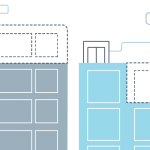With many older Asian workers planning to leave the workforce – taking their knowledge and experience with them – the competition for talented employees who can fill that impending void is fierce. And that is making manpower planning a priority for both businesses and governments in Asia, as evidenced by initiatives like Singapore’s Industry Transformation Programme. That plan includes a “transformation roadmap” for the more than 20 industries that make up 80% of Singapore’s economy.
While Singapore’s manpower planning looks at things from a national level, businesses everywhere are doing their own version. Here’s a quick overview of manpower planning and what it means for you.

What is manpower planning?
The overall goal of manpower planning is simple: making sure the organization will have the talent it needs to meet future demands. More specifically, that includes:
- Identifying both shortages and surpluses in time for the necessary adjustments to be made
- Identifying employees whose skills are being underutilized in their current roles
- Identifying skills gaps
- Recruiting for the skills the organization needs today
- Taking steps to develop those skills in tomorrow’s employees
What does it mean for me?
If your HR department hasn’t yet been tasked with manpower planning, you will be soon. It’s going to become a business imperative over the next few years. When you think of the scope and importance of that job, it can be a bit overwhelming, but it helps to break it down into distinct tasks:
- Analyzing where you are today: The first step in workforce planning is to analyze your current “inventory” of talent. It starts by identifying the skills needed for each position as well as the skills of the employee currently in that position. That information serves as the basis for some critical questions: Are you overstaffed or understaffed? Are the right employees in the right jobs? Are any employees being underutilized? Or, alternatively, struggling in positions for which they’re under-qualified? And, perhaps most importantly: Is there any work we shouldn’t be doing? And is there any work we should be doing, but aren’t?
- Forecasting future needs: The main requirement for this step is a clear understanding of company strategy: Who does the company want to be five years from now, and what do you want to be doing? Only when you’ve answered that question can you start identifying the skills that will get you there. Predictive analytics can be extremely helpful in this task, as can things like industry forecasts and thought-leader projections.
- Fix any immediate problems: While the purpose of a “where we are now” analysis is to give you a basis for predicting future needs, immediate problems do often come to light. That could mean everything from increasing or decreasing staff in a particular function to establishing career development paths for your most talented employees.
- Initiate plans to develop current employees: Which of your forecasted skills gaps can be filled by further developing current employees? One of the main benefits of manpower planning is that it gives you time to groom your current talented employees rather than replacing them with people who already have those skills. And don’t forget to include new hires: What changes can you make to the onboarding process to most effectively utilize each employee?
- Develop the next generation: A immediate skills gap within your organization requires one approach. A skills gap in tomorrow’s workforce is a very different thing. One solution is to collaborate with educational institutions, such as the STEM initiative in the United States, which emphasizes education in Science, Technology, Engineering, and Mathematics. On a smaller level, developing the next generation could include things like hosting summer “camps” where employees who have the skills you need attempt to pique the interest of current students. Or sending those same representatives on school visits to talk to various classes about the possibilities that are open to them.
Manpower planning isn’t a single “task” that you do once and then move on. It’s what undergirds your entire organization’s future success: the point is to have a pipeline full of people – whether you identified them or developed them yourself – with the skills your organization is going need to succeed in the future.







